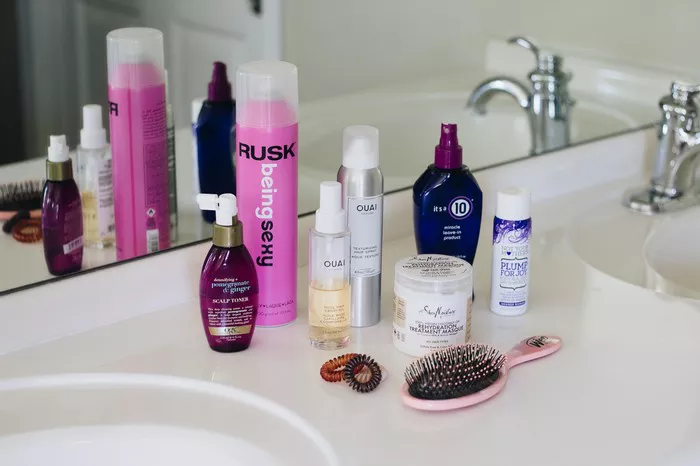Healthy, beautiful hair is a reflection of good care and the right treatments. While at-home products can be effective, professional salon treatments often provide deeper nourishment and long-lasting results. This article explores the best hair treatments available in salons, detailing their benefits, processes, and what to consider when choosing the right treatment for your hair type.
Understanding Hair Types and Needs
Hair Structure
Before diving into specific treatments, it’s essential to understand hair structure. Hair consists of three layers:
Cuticle: The outermost layer that protects the inner layers.
Cortex: The middle layer that gives hair its strength and color.
Medulla: The innermost layer, found in thicker hair types.
Different hair types (straight, wavy, curly, coily) and conditions (damaged, dry, oily, color-treated) require tailored treatments to address specific concerns.
Identifying Hair Needs
To determine the best salon treatment, consider the following:
Damage Level: Assess if your hair is dry, brittle, or prone to breakage.
Texture and Type: Different treatments cater to various hair types.
Scalp Condition: A healthy scalp promotes healthy hair growth.
Popular Salon Hair Treatments
1. Deep Conditioning Treatments
Overview: Deep conditioning treatments infuse moisture and nutrients into the hair shaft, helping to repair damage and improve texture.
Benefits:
Restores moisture balance
Reduces frizz
Enhances shine
Process: Typically applied after washing, the treatment is left on for 15-30 minutes, sometimes under heat for better absorption.
Best For: Dry, damaged, or color-treated hair.
2. Keratin Treatments
Overview: Keratin treatments smooth and strengthen hair, reducing frizz and making it more manageable.
Benefits:
Reduces blow-drying time
Adds shine
Tames frizz
Process: The treatment involves applying a keratin formula to clean hair, followed by heat sealing it with a flat iron.
Best For: Frizzy, curly, or unruly hair.
3. Olaplex Treatments
Overview: Olaplex is a bond-building treatment designed to repair damaged hair by reconnecting broken bonds.
Benefits:
Strengthens hair
Repairs chemical damage
Improves overall health
Process: Olaplex is often used as a multi-step process, either as a standalone treatment or integrated into color services.
Best For: Chemically treated or heavily damaged hair.
4. Scalp Treatments
Overview: Scalp treatments focus on promoting a healthy scalp environment, which is crucial for hair growth.
Benefits:
Reduces dandruff and irritation
Improves scalp circulation
Balances oil production
Process: Treatments may include exfoliation, massages, and application of specialized products.
Best For: Oily, dry, or irritated scalps.
5. Hair Masks
Overview: Professional hair masks are concentrated treatments that target specific hair concerns.
Benefits:
Deeply nourishes hair
Repairs damage
Enhances manageability
Process: Masks are applied to clean, damp hair and typically left on for a longer duration for optimal results.
Best For: All hair types, depending on the specific mask.
6. Color Treatments
Overview: While primarily a cosmetic service, professional color treatments often include conditioning elements that protect and nourish hair.
Benefits:
Adds dimension and vibrancy
Can improve hair texture with certain formulations
Long-lasting results
Process: Color treatments can vary from highlights to all-over color and often involve a post-color conditioning treatment.
Best For: Those looking to enhance their natural color or cover grays.
7. Hair Smoothing Treatments
Overview: Smoothing treatments, such as Brazilian Blowouts, aim to eliminate frizz and provide a sleek appearance.
Benefits:
Makes hair more manageable
Lasts for several weeks to months
Reduces styling time
Process: Similar to keratin treatments, these involve applying a product and using heat to seal it in.
Best For: Frizzy or curly hair that needs smoothing.
Factors to Consider When Choosing a Treatment
1. Hair Type
Understanding your hair type is crucial in selecting the right treatment. Consult with your stylist to determine what will work best for your specific needs.
2. Desired Results
Clearly define what you want to achieve—whether it’s hydration, repair, smoothing, or scalp health.
3. Commitment Level
Some treatments, like keratin, may require a longer commitment and specific aftercare. Be prepared to follow the recommended maintenance routine.
4. Budget
Salon treatments can vary widely in price. Set a budget and discuss options with your stylist to find a treatment that meets your needs without breaking the bank.
Aftercare Tips for Salon Treatments
To ensure the longevity of your salon treatments, follow these aftercare tips:
Use Sulfate-Free Products: Protect your hair by using gentle, sulfate-free shampoos and conditioners.
Limit Heat Styling: Reduce the use of heat tools to maintain your hair’s health.
Regular Maintenance: Schedule follow-up treatments as recommended by your stylist.
Protect from Sun Exposure: Use UV protection products to shield your hair from the sun.
Conclusion
Choosing the best hair treatment at a salon involves understanding your hair type, desired results, and available options. From deep conditioning to keratin treatments, each option offers unique benefits tailored to specific hair concerns. By consulting with a professional stylist and committing to proper aftercare, you can achieve and maintain beautiful, healthy hair that turns heads.
Investing in your hair with professional treatments is an investment in your overall confidence and appearance. Whether you seek hydration, repair, or smoothness, the right salon treatment can transform your locks and enhance your beauty.
Related topics:
- What to Do with Over-Processed Bleached Hair: A Full Guide
- What should you use to bleach your hair? You Need to Know
- What Does Frizz Ease Do? The Solution to Frizzy Hair


